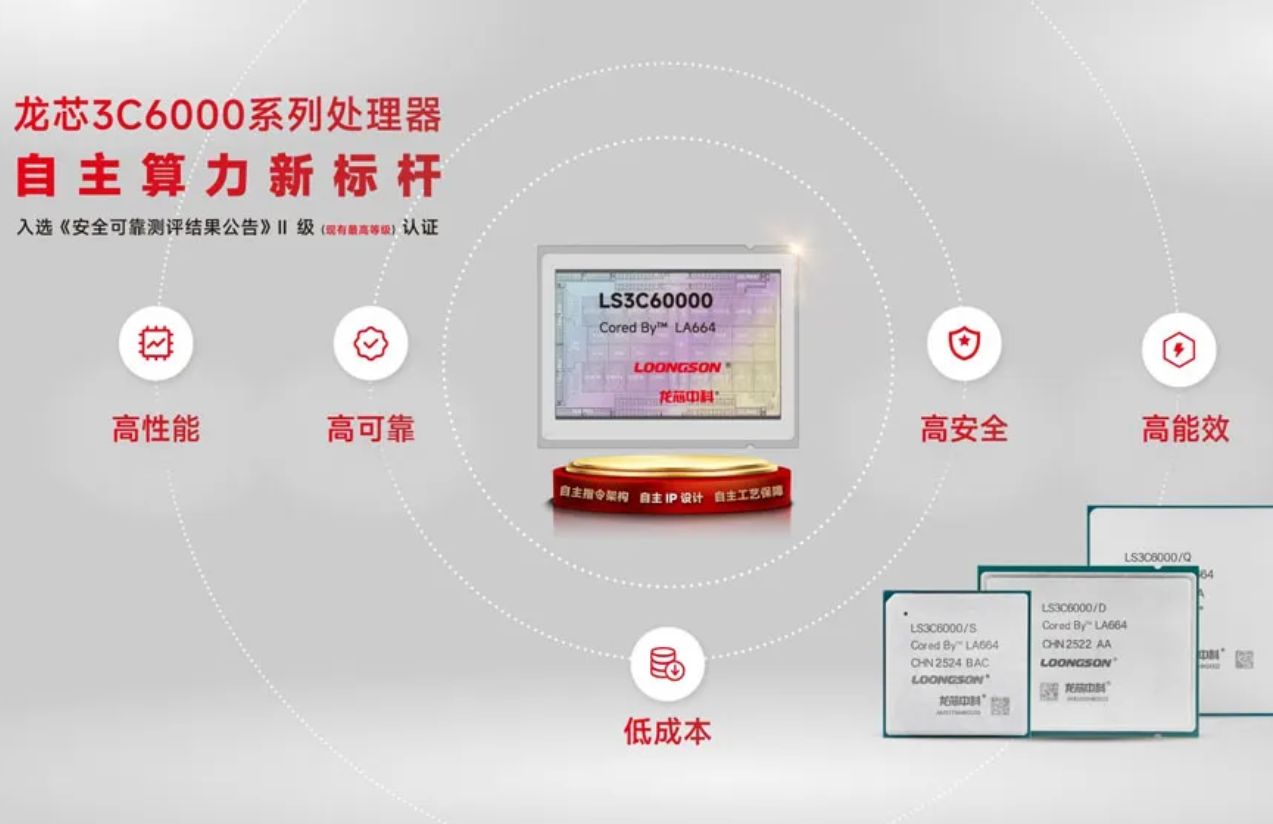Chinese chipmaker Loongson has officially announced the launch of its latest generation of desktop processors: the 3C6000 series, whose flagship model boasts 64 physical cores, a chiplet design with 16 cores per module, and a thermal design power (TDP) of up to 300 watts.
At a time when global semiconductor manufacturers are focused on improving energy efficiency—seeking greater performance with lower or more optimized power consumption—China is taking a different path. Still technologically behind industry leaders like Intel and AMD, the country is now entering the era of “raw computing power,” producing CPUs with massive performance potential but high energy demands. For the home computing market, this approach could pose more drawbacks than advantages, requiring powerful PSUs and advanced cooling systems.
Loongson had already introduced the 3C6000 chips for servers more than a year ago. Now, it’s rolling out desktop variants along with two additional processor lines: 2K3000 and 3B6000M. These two entry-level models are based on the LA364E architecture, featuring 8 cores and modest clock speeds of up to 2.5 GHz. They also include the integrated LG200 GPU, offering up to 256 GFLOPs in FP32 performance and 8 TOPS for AI tasks.
However, the highlight of the announcement is the 3C6000 lineup, built on Loongson’s fourth-generation LA664 architecture. This series comes in three configurations:
S series: single chiplet, 16 cores
D series: two chiplets, 32 cores
Q series: four chiplets, 64 cores
Despite the impressive core counts, clock speeds remain low at just 2.2 GHz. Still, power consumption is significant—120W for the S series, and up to 300W for the D and Q variants. In terms of cache, each core includes 64 KB of L1 instruction cache, 64 KB of L1 data cache, 256 KB of L2 cache, and there’s a shared 32 MB L3 cache.
The chips also reveal some of China’s ongoing technological lag. Although DDR5 RAM has been standard since 2020, these processors only support DDR4 at up to 3,200 MHz—albeit with a quad-channel memory architecture. They are compatible with PCIe 4.0 (offering 128 lanes), still a step behind the PCIe 5.0 standard now common globally.
While marketed as desktop processors, Loongson has benchmarked them against third-generation Intel Xeon “Ice Lake-SP” server chips released in 2021. It’s worth noting, however, that the performance figures were provided solely by the manufacturer and have not been independently verified.
In short, the 3C6000 series represents the most powerful processors developed in China to date. And while the gap with industry leaders remains, Loongson is narrowing the distance. A decade ago, China trailed the market by as much as ten years; today, that difference is estimated to be just four to five years.

